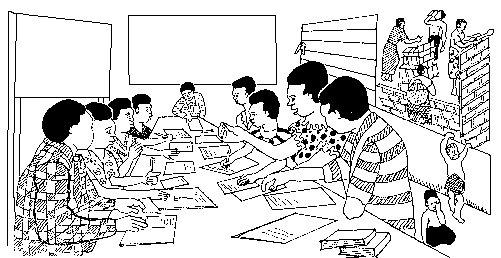Tweet
Translations:
Arabic
Bahasa Indonesia
Deutsch
English
Español
Filipino
Français
Galego
Greek
Hindi
Italiano
Japanese
Malay
Polski
Português
Romãnã
Russian
Telugu
Thai
Tiếng Việt
Urdu
Other formats:
Text
Power Point
Other Pages:
Modules
Site Map
Key Words
Contact
Utility Documents
Useful Links
Organizing for Action
Roles and Responsibilities
by Phil Bartle, PhD
Training Handout
A group can be organized in different ways for different purposes; look for the best organizational set-up for effective community action
Many people do not realize the different kinds of organizing, for different purposes, done by a mobilizer.
- organizing for decision making; and
- organizing for action.
When you assisted the community to form the executive committee, you were organizing for community decision making.
Now, when you work with the community to decide who does what (eg in the project), you are organizing for action. See Organizing by Training.
Although there will be overlap, action organizing should also identify certain individuals to carry out specific tasks. This is essential.
If a task has been identified (eg transport roofing sheets to the project site), it should not be left up to the group as a whole.That way it may never get done as everyone thinks it is someone else's responsibility.
A large number of tasks should not fall on one person, eg the chairperson of the executive. It is important that as many tasks and responsibilities be delegated to as many other community members (especially those not on the executive) as possible.
Emphasize the value of as much and widespread participation and contribution as possible. Make sure that when a task or responsibility is delegated to an individual, that it is well known by everyone, and if it is not completed on time, that individual can be called to account by the community.
Community action (that you facilitate) should not be spontaneous and ad hoc. It should be organized.
––»«––
Workshop; Training for Action
